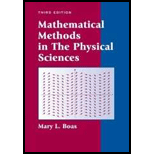
Mathematical Methods in the Physical Sciences
3rd Edition
ISBN: 9780471198260
Author: Mary L. Boas
Publisher: Wiley, John & Sons, Incorporated
expand_more
expand_more
format_list_bulleted
Concept explainers
Textbook Question
Chapter 15.8, Problem 11P
As in Examples 1 and 2, use (a) the binomial distribution; (b) the corresponding normal approximation, to find the probabilities of each of the following:
Exactly 50 heads in 100 tosses of a coin.
Expert Solution & Answer
Want to see the full answer?
Check out a sample textbook solution
Chapter 15 Solutions
Mathematical Methods in the Physical Sciences
Ch. 15.1 - If you select a three-digit number at random, what...Ch. 15.1 - Three coins are tossed; what is the probability...Ch. 15.1 - In a box there are 2 white, 3 black, and 4 red...Ch. 15.1 - A single card is drawn at random from a shuffled...Ch. 15.1 - Given a family of two children (assume boys and...Ch. 15.1 - A trick deck of cards is printed with the hearts...Ch. 15.1 - A letter is selected at random from the alphabet....Ch. 15.1 - An integer N is chosen at random with 1N100. What...Ch. 15.1 - You are trying to find instrument A in a...Ch. 15.1 - A shopping mall has four entrances, one on the...
Ch. 15.2 - Set up an appropriate sample space for each of...Ch. 15.2 - Set up an appropriate sample space for each of...Ch. 15.2 - Set up an appropriate sample space for each of...Ch. 15.2 - Set up an appropriate sample space for each of...Ch. 15.2 - Set up an appropriate sample space for each of...Ch. 15.2 - Set up an appropriate sample space for each of...Ch. 15.2 - Set up an appropriate sample space for each of...Ch. 15.2 - Set up an appropriate sample space for each of...Ch. 15.2 - Set up an appropriate sample space for each of...Ch. 15.2 - Set up an appropriate sample space for each of...Ch. 15.2 - Set up several nonuniform sample spaces for the...Ch. 15.2 - Use the sample space of Example 1 above, or one or...Ch. 15.2 - A student claims in Problem 1.5 that if one child...Ch. 15.2 - Two dice are thrown. Use the sample space ( 2.4 )...Ch. 15.2 - Use both the sample space (2.4) and the sample...Ch. 15.2 - Given an nonuniform sample space and the...Ch. 15.2 - Two dice are thrown. Given the information that...Ch. 15.2 - Are the following correct nomuniform sample spaces...Ch. 15.2 - Consider the set of all permutations of the...Ch. 15.3 - (a) Set up a sample space for the 5 black and 10...Ch. 15.3 - Prove (3.1) for a nonuniform sample space. Hints:...Ch. 15.3 - What is the probability of getting the sequence...Ch. 15.3 - (a) A weighted coin has probability of 23 of...Ch. 15.3 - What is the probability that a number n,1n99, is...Ch. 15.3 - A card is selected from a shuffled deck. What is...Ch. 15.3 - (a) Note that (3.4) assumes P(A)0 since PA(B) is...Ch. 15.3 - Show that...Ch. 15.3 - Prob. 9PCh. 15.3 - Three typed letters and their envelopes are piled...Ch. 15.3 - In paying a bill by mail, you want to put your...Ch. 15.3 - (a) A loaded die has probabilities...Ch. 15.3 - (a) A candy vending machine is out of order. The...Ch. 15.3 - A basketball player succeeds in making a basket 3...Ch. 15.3 - Use Bayes' formula ( 3.8 ) to repeat these simple...Ch. 15.3 - Suppose you have 3 nickels and 4 dimes in your...Ch. 15.3 - (a) There are 3 red and 5 black balls in one box...Ch. 15.3 - Two cards are drawn at random from a shuffled...Ch. 15.3 - Suppose it is known that 1 of the population have...Ch. 15.3 - Some transistors of two different kinds (call them...Ch. 15.3 - Two people are taking turns tossing a pair of...Ch. 15.3 - Repeat Problem 21 if the players toss a pair of...Ch. 15.3 - A thick coin has 37 probability of falling heads,...Ch. 15.4 - (a) There are 10 chairs in a row and 8 people to...Ch. 15.4 - In the expansion of (a+b)n (see Example 2), let...Ch. 15.4 - A bank allows one person to have only one savings...Ch. 15.4 - Five cards are dealt from a shuffled deck. What is...Ch. 15.4 - A bit (meaning binary digit) is 0 or 1. An ordered...Ch. 15.4 - A so-called 7 -way lamp has three 60 -watt bulbs...Ch. 15.4 - What is the probability that the 2 and 3 of clubs...Ch. 15.4 - Two cards are drawn from a shuffled deck. What is...Ch. 15.4 - Two cards are drawn from a shuffled deck. What is...Ch. 15.4 - What is the probability that you and a friend have...Ch. 15.4 - The following game was being played on a busy...Ch. 15.4 - Consider Problem 10 for different months of birth....Ch. 15.4 - Generalize Example 3 to show that the number of...Ch. 15.4 - (a) Find the probability that in two tosses of a...Ch. 15.4 - Set up the uniform sample spaces for the problem...Ch. 15.4 - Do Problem 15 for 2 particles in 2 boxes. Using...Ch. 15.4 - Find the number of ways of putting 2 particles in...Ch. 15.4 - Find the number of ways of putting 3 particles in...Ch. 15.4 - (a) Following the methods of Examples 3, 4, and 5,...Ch. 15.4 - (a) In Example 5, a mathematical model is...Ch. 15.4 - The following problem arises in quantum mechanics...Ch. 15.4 - Suppose 13 people want to schedule a regular...Ch. 15.4 - Do Problem 22 if one person is busy 3 evenings,...Ch. 15.5 - Set up sample spaces for Problems 1 to 7 and list...Ch. 15.5 - Set up sample spaces for Problems 1 to 7 and list...Ch. 15.5 - Set up sample spaces for Problems 1 to 7 and list...Ch. 15.5 - Set up sample spaces for Problems 1 to 7 and list...Ch. 15.5 - Set up sample spaces for Problems 1 to 7 and list...Ch. 15.5 - Set up sample spaces for Problems 1 to 7 and list...Ch. 15.5 - Set up sample spaces for Problems 1 to 7 and list...Ch. 15.5 - Would you pay $10 per throw of two dice if you...Ch. 15.5 - Prob. 9PCh. 15.5 - Let be the average of the random variable x. Then...Ch. 15.5 - Show that the expected number of heads in a single...Ch. 15.5 - Use Problem 9 to find the expected value of the...Ch. 15.5 - Show that adding a constant K to a random variable...Ch. 15.5 - As in Problem 11, show that the expected number of...Ch. 15.5 - Use Problem 9 to find x in Problem 7.Ch. 15.5 - Show that 2=Ex22. Hint: Write the definition of 2...Ch. 15.5 - Use Problem 16 to find in Problems 2, 6, and 7.Ch. 15.6 - (a) Find the probability density function f(x) for...Ch. 15.6 - It is shown in the kinetic theory of gases that...Ch. 15.6 - A ball is thrown straight up and falls straight...Ch. 15.6 - In Problem 1 we found the probability density...Ch. 15.6 - The probability for a radioactive particle to...Ch. 15.6 - A circular garden bed of radius 1m is to be...Ch. 15.6 - (a) Repeat Problem 6 where the circular area is...Ch. 15.6 - Given that a particle is inside a sphere of radius...Ch. 15.6 - Prob. 9PCh. 15.6 - Do Problem 5.10 for a continuous distribution.Ch. 15.6 - Do Problem 5.13 for a continuous distribution.Ch. 15.6 - Do Problem 5.16 for a continuous distribution.Ch. 15.6 - Prob. 13PCh. 15.6 - Prob. 14PCh. 15.6 - Show that the covariance of two independent (see...Ch. 15.6 - Prob. 16PCh. 15.7 - For the values of n indicated in Problems 1 to 4 :...Ch. 15.7 - For the values of n indicated in Problems 1 to 4:...Ch. 15.7 - For the values of n indicated in Problems 1 to 4:...Ch. 15.7 - For the values of n indicated in Problems 1 to 4:...Ch. 15.7 - Write the formula for the binomial density...Ch. 15.7 - For the given values of n and p in Problems 6 to...Ch. 15.7 - For the given values of n and p in Problems 6 to...Ch. 15.7 - For the given values of n and p in problems 6 to...Ch. 15.7 - Use the second method of Problem 5.11 to show that...Ch. 15.7 - Show that the most probable number of heads in n...Ch. 15.7 - Use the method of Problem 10 to show that for the...Ch. 15.7 - Let x= number of heads in one toss of a coin. What...Ch. 15.7 - Generalize Problem 12 to show that for the general...Ch. 15.8 - Verify that for a random variable x with normal...Ch. 15.8 - Do Problem 6.4 by comparing eax2 with f(x) in...Ch. 15.8 - The probability density function for the x...Ch. 15.8 - Prob. 4PCh. 15.8 - Computer plot on the same axes the normal density...Ch. 15.8 - Do Problem 5 for =16,13,1.Ch. 15.8 - By computer find the value of the normal...Ch. 15.8 - Carry through the following details of a...Ch. 15.8 - Computer plot a graph like Figure 8.3 of the...Ch. 15.8 - Computer plot graphs like Figure 8.2 but with p12...Ch. 15.8 - As in Examples 1 and 2, use (a) the binomial...Ch. 15.8 - As in Examples 1 and 2, use (a) the binomial...Ch. 15.8 - As in Examples 1 and 2, use (a) the binomial...Ch. 15.8 - As in Examples 1 and 2, use (a) the binomial...Ch. 15.8 - As in Examples 1 and 2, use (a) the binomial...Ch. 15.8 - As in Examples 1 and 2, use (a) the binomial...Ch. 15.8 - As in Examples 1 and 2, use (a) the binomial...Ch. 15.8 - As in Examples 1 and 2, use (a) the binomial...Ch. 15.8 - As in Examples 1 and 2, use (a) the binomial...Ch. 15.8 - As in Examples 1 and 2, use (a) the binomial...Ch. 15.8 - As in Examples 1 and 2, use (a) the binomial...Ch. 15.8 - As in Examples 1 and 2, use (a) the binomial...Ch. 15.8 - As in Examples 1 and 2, use (a) the binomial...Ch. 15.8 - As in Examples 1 and 2, use (a) the binomial...Ch. 15.8 - As in Examples 1 and 2, use (a) the binomial...Ch. 15.9 - Solve the sequence of differential equations (9.4)...Ch. 15.9 - Show that the average value of a random variable n...Ch. 15.9 - In an alpha-particle counting experiment the...Ch. 15.9 - Suppose you receive an average of 4 phone calls...Ch. 15.9 - Suppose that you have 5 exams during the 5 days of...Ch. 15.9 - If you receive, on the average, 5 email messages...Ch. 15.9 - In a club with 500 members, what is the...Ch. 15.9 - If there are 100 misprints in a magazine of 40...Ch. 15.9 - If there are, on the average, 7 defects in a new...Ch. 15.9 - Derive equation ( 9.9 ) as follows: In C(n,x),...Ch. 15.9 - Suppose 520 people each have a shuffled deck of...Ch. 15.9 - Computer plot on the same axes graphs of the...Ch. 15.9 - Computer plot on the same axes a graph of the...Ch. 15.10 - Let m1,m2,,mn be a set of measurements, and define...Ch. 15.10 - Let x1,x2,,xn be independent random variables,...Ch. 15.10 - Define s by the equation s2=(1/n)i=1nxix2. Show...Ch. 15.10 - Assuming a normal distribution, find the limits h...Ch. 15.10 - Show that if w=xy or w=x/y, then ( 10.14) gives...Ch. 15.10 - By expanding w(x,y,z) in a three-variable power...Ch. 15.10 - Prob. 7PCh. 15.10 - The following measurements of x and y have been...Ch. 15.10 - Given the measurements...Ch. 15.10 - Given the measurements...Ch. 15.11 - (a) Suppose you have two quarters and a dime in...Ch. 15.11 - (a) Suppose that Martian dice are regular...Ch. 15.11 - There are 3 red and 2 white balls in one box and 4...Ch. 15.11 - If 4 letters are put at random into 4 envelopes,...Ch. 15.11 - Two decks of cards are matched, that is, the order...Ch. 15.11 - Find the number of ways of putting 2 particles in...Ch. 15.11 - Suppose a coin is tossed three times. Let x be a...Ch. 15.11 - (a) A weighted coin has probability 23 of coming...Ch. 15.11 - One box contains one die and another box contains...Ch. 15.11 - Do Problems 10 to 12 using both the binomial...Ch. 15.11 - Do Problems 10 to 12 using both the binomial...Ch. 15.11 - Do Problems 10 to 12 using both the binomial...Ch. 15.11 - A radioactive source emits 1800 particles during...Ch. 15.11 - Suppose a 200-page book has, on the average, one...Ch. 15.11 - In Problems 15 and 16, find the binomial...Ch. 15.11 - In Problems 15 and 16, find the binomial...Ch. 15.11 - Given the measurements...Ch. 15.11 - Given the measurements...
Additional Math Textbook Solutions
Find more solutions based on key concepts
Solve each problem involving proportions. Price of Gasoline If 6 gallons of premium unleaded gasoline cost $17....
Mathematical Ideas (13th Edition) - Standalone book
For the following exercises, verify that each equation is an identity. 151. cot+tan=seccsc
Calculus Volume 1
The equivalent expression of x(y+z) by using the commutative property.
Calculus for Business, Economics, Life Sciences, and Social Sciences (13th Edition)
Voluntary grade inflation. The dean felt that a professor had graded too harshly, so she wrote a questionnaire ...
The Heart of Mathematics: An Invitation to Effective Thinking
Let 2n (equally spaced) points on a circle be chosen. Show that the number of ways to join these points in pair...
Introductory Combinatorics
CHECK POINT 1 Write a word description of the set L = {a, b, c, d, e, f}.
Thinking Mathematically (6th Edition)
Knowledge Booster
Learn more about
Need a deep-dive on the concept behind this application? Look no further. Learn more about this topic, subject and related others by exploring similar questions and additional content below.Recommended textbooks for you
 Discrete Mathematics and Its Applications ( 8th I...MathISBN:9781259676512Author:Kenneth H RosenPublisher:McGraw-Hill Education
Discrete Mathematics and Its Applications ( 8th I...MathISBN:9781259676512Author:Kenneth H RosenPublisher:McGraw-Hill Education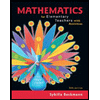 Mathematics for Elementary Teachers with Activiti...MathISBN:9780134392790Author:Beckmann, SybillaPublisher:PEARSON
Mathematics for Elementary Teachers with Activiti...MathISBN:9780134392790Author:Beckmann, SybillaPublisher:PEARSON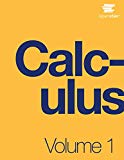
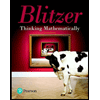 Thinking Mathematically (7th Edition)MathISBN:9780134683713Author:Robert F. BlitzerPublisher:PEARSON
Thinking Mathematically (7th Edition)MathISBN:9780134683713Author:Robert F. BlitzerPublisher:PEARSON Discrete Mathematics With ApplicationsMathISBN:9781337694193Author:EPP, Susanna S.Publisher:Cengage Learning,
Discrete Mathematics With ApplicationsMathISBN:9781337694193Author:EPP, Susanna S.Publisher:Cengage Learning,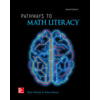 Pathways To Math Literacy (looseleaf)MathISBN:9781259985607Author:David Sobecki Professor, Brian A. MercerPublisher:McGraw-Hill Education
Pathways To Math Literacy (looseleaf)MathISBN:9781259985607Author:David Sobecki Professor, Brian A. MercerPublisher:McGraw-Hill Education

Discrete Mathematics and Its Applications ( 8th I...
Math
ISBN:9781259676512
Author:Kenneth H Rosen
Publisher:McGraw-Hill Education

Mathematics for Elementary Teachers with Activiti...
Math
ISBN:9780134392790
Author:Beckmann, Sybilla
Publisher:PEARSON


Thinking Mathematically (7th Edition)
Math
ISBN:9780134683713
Author:Robert F. Blitzer
Publisher:PEARSON

Discrete Mathematics With Applications
Math
ISBN:9781337694193
Author:EPP, Susanna S.
Publisher:Cengage Learning,

Pathways To Math Literacy (looseleaf)
Math
ISBN:9781259985607
Author:David Sobecki Professor, Brian A. Mercer
Publisher:McGraw-Hill Education
Continuous Probability Distributions - Basic Introduction; Author: The Organic Chemistry Tutor;https://www.youtube.com/watch?v=QxqxdQ_g2uw;License: Standard YouTube License, CC-BY
Probability Density Function (p.d.f.) Finding k (Part 1) | ExamSolutions; Author: ExamSolutions;https://www.youtube.com/watch?v=RsuS2ehsTDM;License: Standard YouTube License, CC-BY
Find the value of k so that the Function is a Probability Density Function; Author: The Math Sorcerer;https://www.youtube.com/watch?v=QqoCZWrVnbA;License: Standard Youtube License